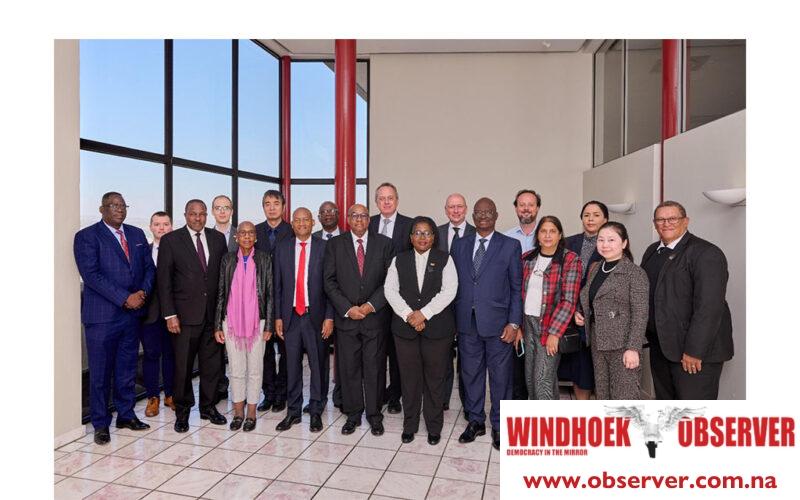Justicia Shipena
The Bank of Namibia (BoN) met with the diplomatic community on Tuesday to discuss economic issues, including the operationalisation of Namibia’s Sovereign Wealth Fund.
The meeting highlighted the Welwitschia Sovereign Wealth Fund as a tool for long-term fiscal sustainability and intergenerational equity.
The fund, established in May 2022, was initially capitalised with N$260 million. By August 2023, it had grown to N$440 million.
As of February of this year, the fund had reached N$453 million, reflecting an increase of N$193 million since its inception.
The fund is structured into short- and long-term investments. It allocates 70% of its assets to equities, while the remainder goes to fixed-income assets, real estate, and private equity.
The Bank of Namibia manages the fund and ensures transparency and accountability.
Approximately 2.5% of the fund is allocated for infrastructure projects that support public services and job creation.
The engagement also focused on raising domestic revenue through sustainability and social bonds. It brought together heads of mission, multilateral institutions, and development partners.
The meeting took place amid global uncertainty and shifting economic conditions.
BoN governor Johannes !Gawaxab spoke about the impact of geopolitical changes, trade tensions, and rapid technological shifts.
“These trends are testing long-standing global systems and require institutions to adapt quickly,” he said.
He added, “Although it is impossible to predict the future with certainty, the combined speed of these changes underscores the necessity for institutions, such as central banks, to continue to serve as guardians of stability in an environment characterised by volatility.”
“As a central bank, we remain anchored to our mandate of price stability and financial stability,” !Gawaxab said.
He reaffirmed the central bank’s strategic direction, noting its goal to build a smart central bank, support a resilient financial system, and embrace a new economy.
BoN data shows the global economy is expected to grow by 2.8% in 2025 and 3.0% in 2026.
Namibia’s growth is forecast at 3.8% in 2025 and 4.0% in 2026. The projected growth is driven by stronger performance in agriculture, non-diamond mining, electricity and water, and construction, despite weaker diamond prices and export tariffs.
!Gawaxab said inflation is under control due to the bank’s cautious monetary policy.
“The policy interest rate has been reduced by a cumulative 100 basis points since August 2024, contributing to a marked decline in inflation from 5.4% in January 2024 to 3.6% in April 2025,” he said.
He said the banking sector remains stable, with enough capital and liquidity to support credit to the real economy.
Diplomatic stakeholders also discussed how global political uncertainty affects capital flows and investment in developing countries.
They noted the recent drop in inflation and its effect on living costs.




